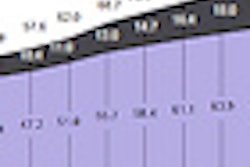A study appearing on Monday in the Journal of Clinical Oncology found that surveillance CT to look for cancer recurrence is overused in children diagnosed with Hodgkin's lymphoma.
Researchers followed more than 200 Hodgkin's lymphoma patients for seven years. They found that most relapses occurred soon after treatment, and these relapses were diagnosed due to clinical changes in the patients rather than imaging results, wrote Dr. Stephen Voss and colleagues from Boston Children's Hospital and Harvard Medical School (JCO, June 11, 2012).
Children with Hodgkin's lymphoma have excellent overall survival of 90% or more. They frequently undergo CT surveillance for recurrence for up to five years after completing chemotherapy; however, most relapse occurs within two years, leaving it unclear whether surveillance beyond the two-year mark is needed.
The study included 216 patients who participated in the multicenter Pediatric Oncology Group 9425 trial. Patients all had biopsy-proven classic Hodgkin's lymphoma, were 21 years or younger, and were diagnosed with either intermediate-risk (stage IB, IIA/IIIA1 with large mediastinal adenopathy, or IIIA2) or high-risk (stage IIB, IIIB, or IV) disease.
Of the 216 eligible patients, 53 (25%) had intermediate-risk disease and 163 (75%) had high-risk disease. After a median follow-up of 7.4 years, events were reported in 35 patients (16%), 25 of whom relapsed after an objective response to therapy.
Six patients were asymptomatic at the time of relapse and had their disease detected based on routine imaging; two of these relapses occurred within the first year after completion of therapy. The median time to relapse from end of treatment was 7.6 months (range, 0.2 to 48.9 months), and 16 (64%) of 25 patients relapsed within the first year after therapy.
There were six deaths in the study group, all in patients who experienced relapse within the first year, they wrote. The findings indicate that CT is overused for routine surveillance of patients with Hodgkin's lymphoma, the group concluded.
Based on the 2006 Biological Effects of Ionizing Radiation (BEIR) VII estimates, a 15-year-old patient undergoing six surveillance CT scans for a cumulative exposure of 30 mSv adds an additional lifetime attributable risk of cancer of 0.48%, indicating the development of eight new cancers in a population of 1,700 patients due to surveillance CT.
Surveillance intensity may be reduced in patients who have an early response to chemotherapy, or lower risk of recurrence, while slow responders to therapy might benefit from more intensive early surveillance, with imaging frequency reduced over time. The authors recommended reducing the routine use of CT surveillance to the initial 12 months after therapy.




















